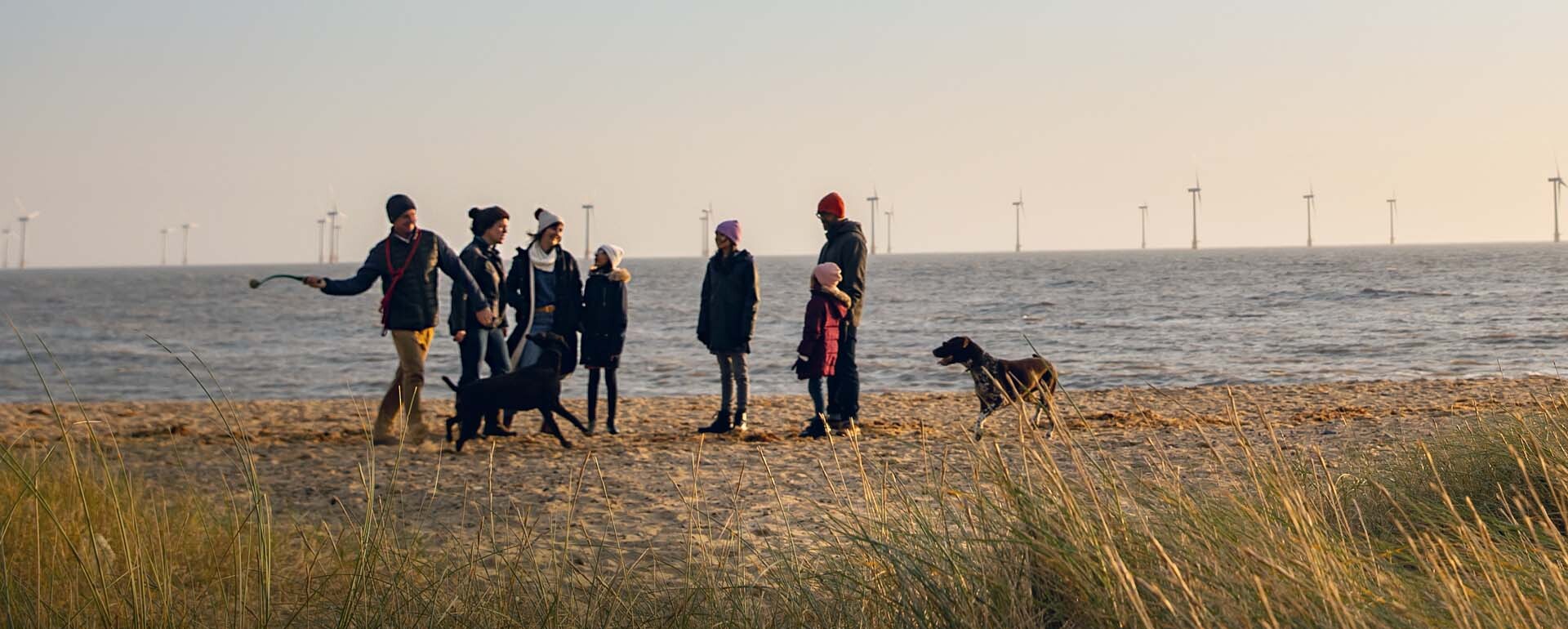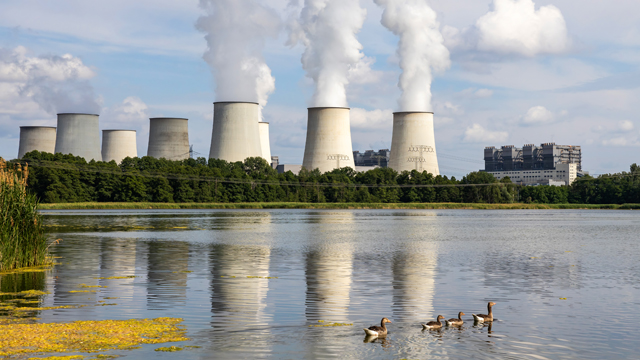
Why is net zero so important?
The global race to remove carbon dioxide and other greenhouse gases from our atmosphere is on. The stakes could not be higher; emissions released by human action are taking a catastrophic toll on our planet and propelling us further into an irreversible climate crisis.
The world’s major governments, scientists and heads of industry have all agreed that urgent action is necessary to avoid further global warming. General consensus is that the world must limit the global average temperature rise to 1.5°C, by roughly halving our carbon dioxide (CO2) emissions by 2030 and reaching net zero by 2050.
Why is global warming dangerous?
Evidence shows that our planet has been getting hotter, with global average temperatures now 1.2°C higher than in the pre-industrial era1.
1.2°C doesn’t sound like much, but the reality is that we’re already feeling the effects of incremental warming, including erratic weather patterns – such as heatwaves, floods and severe storms – loss of polar ice, acidification of our oceans and rising sea levels.
Global temperatures are on track to increase by as much as 2.7°C by 21002 based on current policies worldwide, which could render parts of the planet uninhabitable.

How will net zero help stop global warming?
In the Paris Agreement of 2015, global governments recognised that warming of the earth must be limited to a well below 2°C increase and ideally not more than 1.5°C above pre-industrial levels.
In order to limit this global warming, a significant reduction of greenhouse gas emissions, such as CO2, will be required within a set period.
That’s where net zero comes in; by ensuring that the amount of greenhouse gas emissions being released into the atmosphere are equal to the amount being removed from it, we’ll be helping to significantly reduce the amount of harmful emissions that contribute to global warming.
The 2021 Glasgow Climate Pact, forged at the COP26 climate change conference, recognised that reaching net zero emissions by 2050 is essential and the key to keeping temperatures to 1.5°C of warming, and all countries involved pledged to pursue this limit.
What does net zero look like in practice?
To ensure that net zero is a priority for the countries involved, processes are being put in place for governments and organisations.
At COP27, which will be held in November 2022 in Sharm El Sheikh, Egypt, the aim is to ensure that countries and businesses are delivering on the commitments they made at COP26. Some examples of these include:
Nationally Determined Contributions
The Paris Agreement established a process for all countries to set out their plans to reduce emissions. These are known as Nationally Determined Contributions (NDCs), in which many governments have set a target for achieving net zero.
Some of these NDCs have been included in legislation, leading to penalties if they’re not reached; for example, the UK was the first major economy to set a legal net zero target of 2050 in 2019. Others are not legally binding but still demonstrate national and sectoral commitments, such as the UK and US targeting 100% clean electricity by 2035.
Targets for businesses
Governments are also setting incremental targets and measures for the public and private sectors to adhere to:
For businesses in the private sector, direction is being offered to reduce their carbon footprints as well as financial incentives such as tax rebates.
In the public sector, the government is responsible for reducing emissions across industries such as the energy and transport sectors.
There are also increasing expectations from shareholders that companies have such targets and plans in place. Disclosing this information is expected to become mandatory for UK-based businesses in 2023, as legislation and guidance on climate transition plans develop.
Making the most of renewable energy
Investing in and using renewable energy sources will go some way to significantly reducing the over 40% of global greenhouse gas emissions that come from heating and electricity generation3.
Removing carbon, not just reducing it
The ability to reach net zero doesn’t just hinge on cutting greenhouse gas emissions, but also on removing CO2 from our atmosphere.
Options being explored are technological and biological carbon sequestration measures, where carbon dioxide is taken from the earth’s atmosphere and stored. These include methods such as the preservation of our oceans and grasslands (as these absorb more carbon from the atmosphere than they release – also known as ‘carbon sinks’), as well as reforestation and geological carbon capture and storage (CCS).
Will net zero be achieved by 2050?
Current policies in place globally don’t have us on track for a 1.5°C temperature limit. Even taking into account the country- and sector-specific commitments that were made at COP26, this brings us within a margin of error of 2°C of warming.
Globally, around 90% of emissions are now covered by net zero targets. There are also many countries with shorter-term targets, for example:
The UK government has enshrined in law an intermediate target of cutting emissions by 78%, compared to 1990 levels, by 2035.
In the US, an NDC of 50-52% emissions cut from 2010 levels by 2030 has been agreed.
These are important signals, but not all targets are legally binding and there is a significant lack of short-term policies in place to ensure those targets are met.
The latest reports from the Intergovernmental Panel on Climate Change (IPCC) have made it clear that we’re running out of time, but there is still a limited window of opportunity to implement policies and take action this decade to ensure we avoid the worst effects of climate change. It’s still possible for the world to reach net zero and to limit warming to 1.5°C, but much more action is needed this decade, from governments, businesses and others, to make that happen.
How are net zero efforts being moved forward?
The outcomes of the Glasgow Climate Pact included identifying and enacting measures such as:
Accelerating action
It was agreed by delegates of 197 represented countries at COP26 that there is an urgent need to cut CO2 emissions by 45% to reach net zero around mid-century. But, with present climate action not looking effective enough, all countries are encouraged to present stronger national action plans by the end of 2022 instead of in 2025, when NDCs are revised4.
Moving away from fossil fuels
A hotly contested provision, countries ultimately agreed to ‘phase down’ the use of coal power and ‘phase-out’ ‘inefficient’ fossil-fuel subsidies. Many countries and non-governmental organisations (NGOs) said the language had been diluted (from ‘phase out’ to ‘phase down’) and was not as ambitious as it needs to be.
Defining climate finance
Developed countries came to COP26 falling short on their promise to deliver US $100bn a year for developing countries. The Glasgow pact urges developed countries to fully deliver on this goal by 2025 and to ensure developing nations receiveenoughmoney to reach their own net zero ambitions.
Completing the ‘Paris rulebook’
Countries reached agreement on the remaining issues of the Paris rulebook – a guide established by the Paris Agreement for nations to use to build their own net zero strategies – and clear guidance on how to implement existing frameworks. This includes common timeframes and agreed formats for countries to regularly report on progress, to build trust and transparency.
Real zero: the next step on from net zero
‘Real zero’ refers to sectors (such as the energy sector) aiming to completely eliminate carbon emissions from their operations.
At National Grid, we’re striving for our operational emissions to reach zero in absolute terms, rather than relying on large-scale offsetting or unproven removal technologies to meet our long-term climate commitments.
We believe that the decarbonisation of power grids in the 2030s and our clean energy vision of fossil-free US gas networks by 2050 will enable us as a company to get close to real zero, with only small residual emissions in sectors that currently look hard to abate, such as air travel and elements in our upstream supply chain.
See the net zero milestones we’ve achieved so far
Last updated: 29 Jun 2022
The information in this article is intended as a factual explainer and does not necessarily reflect National Grid's strategic direction or current business activities.



